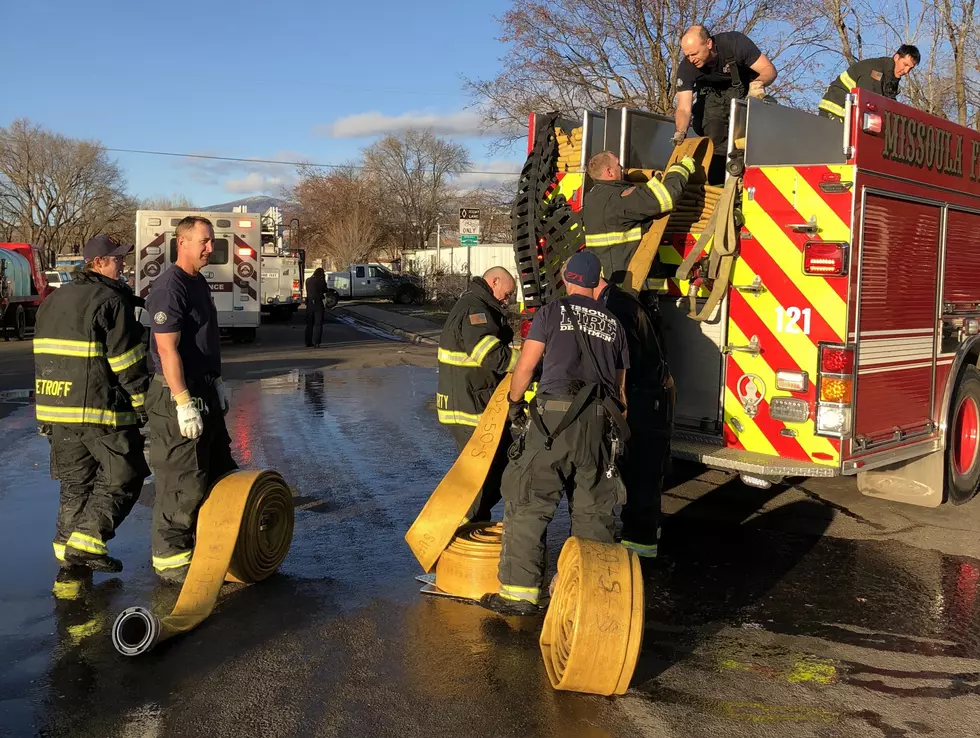
Missoula City Council places $7M annual fire levy on June ballot
Martin Kidston
(Missoula Current) Limited resources and a growing number of calls has left the Missoula Fire Department unable to meet the national standard for response times and without a new station and additional staffing, the gap will continue to grow, officials said Wednesday.
To fund the department's needs, voters this June will be asked to consider levying up to 34 mills to raise around $7 million annually. Among other things, the funding would cover the cost of a sixth fire station, the fire company to staff it, equipment and other operational needs.
The Missoula City Council approved the resolution on Wednesday.
“The city is growing and the fire department needs to grow with it, but it hasn't,” said Andrew Drobeck, president of the local firefighters union. “When we fail public safety, the outcome is bad. Public safety is not the can we want to be kicking down the road.”
The city has for the past several years been reminded during budgeting that a sixth station was needed in the growing Mullan area, which the city annexed several years ago. Still, the city has not filled that need and it's now asking voters to consider paying for it.
Since 2008, according to the fire department, call volumes have increased from 6,500 annually to more than 10,000, or an increase of 59%. During that time, Missoula's population also has increased 15% and the city's boundaries have grown from 24 square miles to 35.
But despite that growth, the fire department hasn't seen an increase in operational staffing. The result has left it stretched increasingly thin and its response times are suffering. That puts public safety at risk, said Fire Chief Gordy Hughes.
“This is where we're failing,” Hughes said of the department's response times. “We're not living up to the standards and best practices set by the National Fire Protection Association.”
The standards consider the moment a call is received by a dispatcher to the time fire crews arrive on scene, and it pushes departments to meet the recommended response time 90% of the time.
But whether it's an emergency medical call or a house fire, the Missoula Fire Department's response times have fallen roughly 2 minutes or more behind national standards. Hughes said seconds can make a difference in medical calls and 2 minutes can change the outcome of a structure fire.
“Two minutes in the emergency world can mean a lot,” he said. “We're simply not meeting our benchmarks for response time. It's sheer call volume. Our personnel have remained the same since 2008, but we're nearing 100% increase in calls.”
While call volumes have grown, simultaneous calls also occur roughly 50% of the time. In 2021, simultaneous incidents occurred more than 3,600 times while three or more simultaneous calls occurred more than 1,500 times.
Depending on the call, Hughes said it can pull resources from one or more departments. If a second event occurs at the same time, other stations have to cover and quickly, he said, resources become unavailable for other incidents.
Once dubbed station reliability, Hughes now refers to it as resource availability. Of the city's five fire stations, only one meets the national standard for reliability.
“We're depleting quickly at some events,” Hughes said. “It's my job as fire chief to ensure we're prepared to respond effectively to fires, vehicle accidents, medical emergencies, hazmat scenes and other emergent situations.”
Not a new concern
The fire department's concerns aren't new. Fire officials have sought a new station for several years and, last year, the city agreed to place a fire levy on the ballot. However, it was also a year in which the state's appraised value of properties soared, leaving residents fearing sharp tax increases.
As a result, interim Mayor Jordan Hess took the fire levy off the ballot citing “taxpayer concerns.” But the need still remains and city officials say the issue can't go unaddressed much longer.
“I've come to the conclusion that this is a critically needed service for the safety of our residents,” said Mayor Andrea Davis. “I agree we cannot wait any longer. I support the resolution placing this initiative on the primary ballot, and I urge the community to come together to support this initiative this June.”
City officials said tax limitations set by the state have resulted in limited funding for essential services. Federal funding is unpredictable as well and grant funding is limited.
That has forced a number of Montana cities to place public safety levies on the ballot. Great Falls adopted one last year and Kalispell and Helena are considering one as well.
In Missoula, if approved, the fire levy would cost $46 annually for every $100,000 in a home's assessed value. For a home with a median assessed value of around $413,200 (according to the Montana Department of Revenue) the levy would cost $189.66 a year.
“Growth doesn't pay for itself in Montana,” said city CAO Dale Bickell. “We don't have any other opportunities to do this in order to support our levels of service.”
